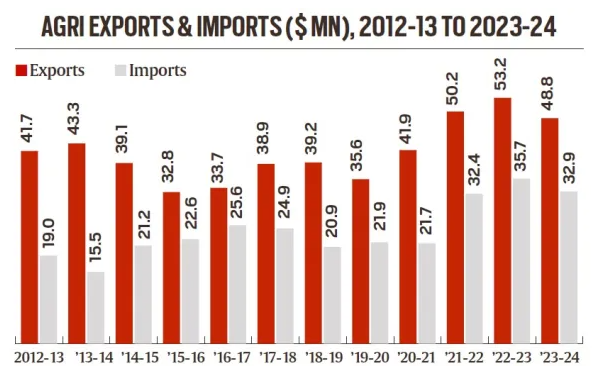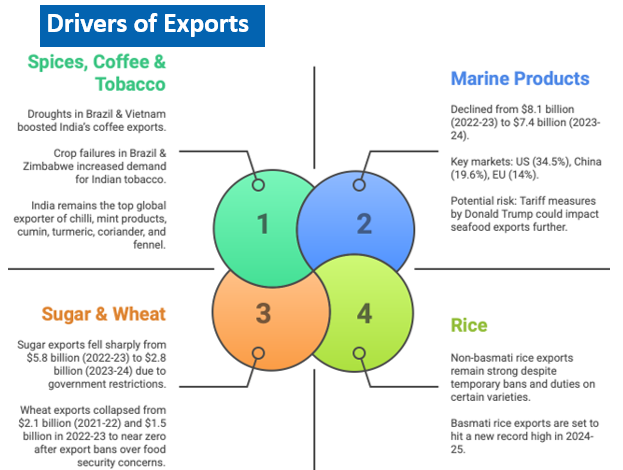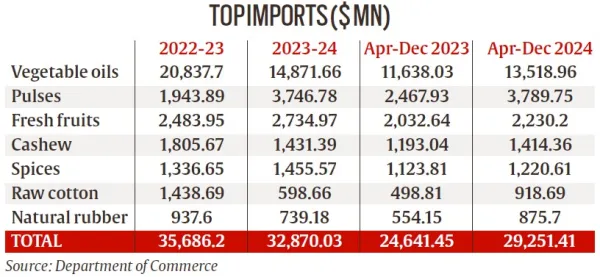Syllabus: GS3/ Agriculture
Context
- India’s agriculture exports have risen 6.5%, from $35.2 billion in April-December 2023 to $37.5 billion in April-December 2024.
Narrowing Agricultural Surplus of India
- India is a net agri-commodities exporter, with the value of its outward shipments consistently exceeding imports.
- However, the trade surplus, which peaked at $27.7 billion in 2013-14, shrunk to $16 billion in 2023-24.

- The UN Food and Agriculture Organization’s (FAO) food price index (2014-16=100) dropped from 119.1 to 96.4 points between 2013-14 and 2019-20.
- Low world prices made India’s agricultural exports less cost competitive, and its farmers more vulnerable to cheaper imports.

India’s agricultural Imports
- India’s agricultural imports are dominated by two commodities: Edible oils and pulses.
- Pulses: Imports fell from $4.2 billion in 2016-17 to an average of $1.7 billion (2018-23) due to higher domestic production but surged past $5 billion in 2023-24 due to a poor crop.
- Edible Oils: Spending in 2024-25 is set to be the highest after 2021-22 ($19 billion) and 2022-23 ($20.8 billion), when the Ukraine war drove up global prices.
- Cotton: Once a major exporter, India became a net importer in 2024. Exports ($575.7 million) fell 8.1% (April-Dec), while imports ($918.7 million) surged 84.2%.

Reasons for Narrowing Agriculture Surplus of India
- Trade & Export Policies: Frequent restrictions (such as bans on rice and sugar exports) have impacted India’s credibility in global markets, leading to a decline in agricultural exports.
- Supply Chain Disruptions: The COVID-19 pandemic and the Russia-Ukraine war disrupted global trade, affecting both supply and demand for Indian agricultural products.
- High input costs (fertilizers, fuel, logistics) have reduced profit margins for Indian exporters.
- Climate Variability: Pulses are often grown in rainfed areas where they are highly susceptible to climate variability which lead to yield fluctuations and lower production.
- The El Niño-induced patchy monsoon and winter rain that caused a decline in domestic pulses production in 2023-24.
Way Ahead
- Diversifying Export Markets: Reduce dependence on key markets like the US and China by exploring new destinations for marine products and other exports.
- Building Climate Resilience: Strengthen irrigation infrastructure and climate-resilient farming to reduce vulnerability to poor harvests and import fluctuations.
- Export Competitiveness: Invest in agricultural R&D to improve productivity and reduce production costs.
- Strengthen value-added processing to make exports more competitive.
- Trade Policies: Leverage trade agreements to secure better market access for Indian farm products.
Source: IE
Previous article
Success of National Health Mission (NHM)
Next article
IMF Raised Concerns Related to NBFCs